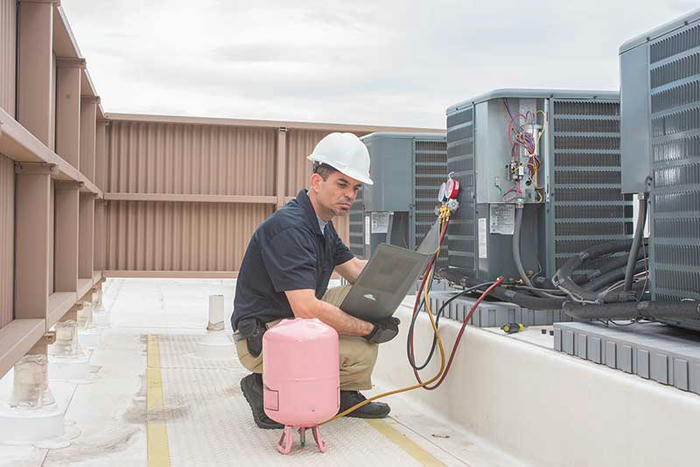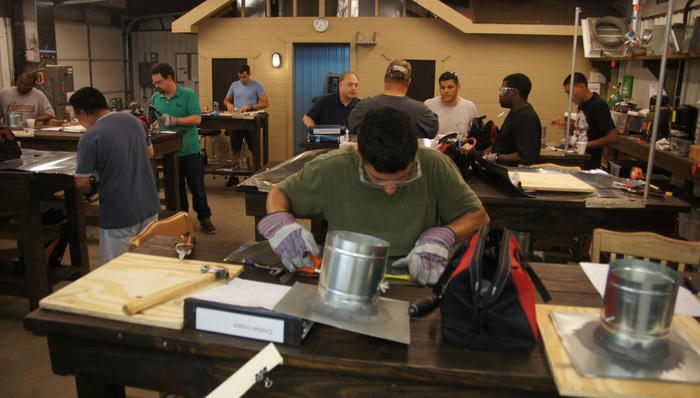HVAC Technician Training: Towards a new direction for your future career
The demand for skilled HVAC technicians is skyrocketing across the globe. From the bustling cities of the United States to the growing urban centers of South Africa, buildings and homes rely on efficient heating, ventilation, and air conditioning systems. If you’re looking for a stable, hands-on career with opportunities to grow, becoming an HVAC technician could be your ideal next step. Here’s how to start—and why now is the perfect time.
1. How Long Does HVAC Training Take? Flexibility Meets Opportunity
HVAC training adapts to your lifestyle and goals. In the United States and Canada, vocational schools and community colleges offer programs lasting 6 months to 2 years, providing certifications or associate degrees. For example, ACCA’s entry-level courses equip students with foundational skills in under a year. Meanwhile, countries like Germany and Japan prioritize apprenticeships, blending paid on-the-job training with classroom learning over 3–5 years. These programs, often sponsored by local unions or contractors, ensure you earn while you learn.
If time is a constraint, online courses are revolutionizing accessibility. Platforms like HVAC Training Solutions allow learners in France or Italy to complete self-paced modules in weeks. No matter your location or schedule, there’s a path tailored to you.

2. Finding the Right Training Program: Local and Global Resources
Your journey begins with choosing the right training avenue. In the U.S., check local trade schools or explore the Department of Labor’s apprenticeship portal for sponsored programs. British learners can connect with organizations like the Building Engineering Services Association (BESA), while South Africans benefit from technical colleges in Johannesburg or Cape Town.
Certifications matter. Institutions like NATE (North American Technician Excellence) and HVAC Excellence set global standards. In Japan, certifications from the Japan Refrigeration and Air Conditioning Industry Association (JRAIA) are highly respected. For those preferring online flexibility, platforms like Udemy or Coursera offer accredited courses recognized in Germany and beyond.
Pro tip: Contact local HVAC companies in your region. Many, like France’s ENGIE or Italy’s Ariston Group, partner with training providers to fast-track skilled candidates.

3. A Day in the Life: What HVAC Technicians Actually Do
HVAC work is dynamic and impactful. Imagine installing a heat pump in a Berlin apartment, troubleshooting a smart thermostat in a Toronto office, or optimizing ventilation in a Tokyo hospital. Technicians handle:
Installation: Assembling systems, wiring controls, and ensuring compliance with safety codes.
Maintenance: Performing seasonal checks, replacing filters, and calibrating energy-efficient units.
Repairs: Diagnosing electrical faults or refrigerant leaks—skills critical during heatwaves or cold snaps.
Client interaction is key. In South Africa, you might educate homeowners on solar-powered HVAC solutions. In Italy, you’ll collaborate with architects to integrate systems into historic buildings. Every job combines technical expertise with problem-solving—no two days are the same.
4. Why HVAC Careers Are Thriving: Data-Driven Growth
The numbers speak for themselves. The U.S. Bureau of Labor Statistics projects a 9% surge in HVAC jobs over the next decade—nearly double the average occupation. Similar trends are visible in the UK, where renewable heating systems are mandated in new builds, and in South Africa, where infrastructure expansion drives demand.
Technological advancements are reshaping the field. Smart HVAC systems in France’s eco-conscious cities or geothermal installations in Iceland require technicians versed in cutting-edge tools. Specializing in areas like refrigeration (critical in Canada’s food supply chain) or industrial ventilation (vital for German factories) can boost earning potential.
Salaries reflect this demand. In the past three years, the annual salary of entry-level technicians in the United States has increased by 60%, while the annual salary of experienced professionals has doubled. In Japan, certifications can increase wages by 20%, while South Africa’s growing construction sector offers rapid career progression.
5. Take Action Now: Secure Your Place in a Growing Industry
The HVAC industry isn’t just stable—it’s essential. Climate change, urbanization, and energy regulations ensure long-term relevance. Whether you’re in Montreal or Munich, the path is clear:
Research local programs: For example, Job Bank in Canada or the employment agency in Germany.
Apply for apprenticeships: Reach out to contractors like British Gas or France’s Daikin.
Enroll in certifications: Start with EPA Section 608 (U.S.) or F-Gas (EU) credentials to handle refrigerants.
Don’t wait. With global demand outpacing skilled workers, delaying could mean missing out on prime opportunities. Training providers are expanding courses—enrollments in Italy’s ITS Academies have risen 30% since 2023.
Your Future Starts Today
HVAC technicians build comfort, safety, and sustainability. Whether you’re drawn to the precision of installations in Japan or the innovation of smart systems in Silicon Valley, this career offers a passport to global opportunities. The tools are in your hands—take the first step now and position yourself at the forefront of an industry that keeps the world running.
